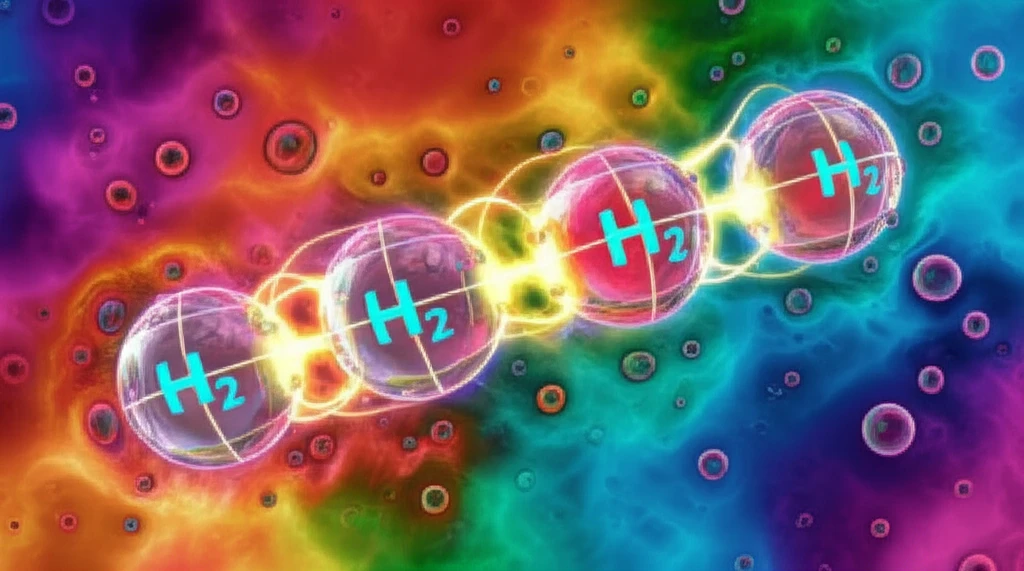
Ionic Liquid Breakthrough: Scientists Discover Unexpected Molecular Chains
"New research unveils attractive cation-cation interactions in designer solvents, potentially revolutionizing chemical processes."
Ionic liquids (ILs) are gaining traction in various fields due to their unique properties, offering tailored solutions for everything from chemical synthesis to electrochemical devices. These liquids are essentially salts that are liquid at relatively low temperatures, and their behavior is governed by a delicate balance of forces, including electrostatic interactions and hydrogen bonds.
A team of scientists has now made a surprising discovery about the behavior of certain ILs. The study focuses on specially designed ILs where the positively charged ions (cations) are capable of forming hydrogen bonds with each other, something not typically expected due to their like charges.
Using advanced spectroscopic techniques and computational modeling, researchers have revealed the existence of stable, chain-like structures formed by these cations. This unexpected "cation-cation" attraction could open new avenues for designing ILs with specific properties and enhanced performance in various applications.
Unveiling the Attraction: How Cations Bond in Ionic Liquids

Typically, in ionic liquids, the main interactions are thought to occur between positively charged cations and negatively charged anions. The cations and anions are expected to attract each other. However, this new research highlights a scenario where cations, which would normally repel each other due to their like charges, exhibit an unexpected attraction.
- Spectroscopic Analysis: The team used cryogenic ion vibrational predissociation spectroscopy to study the structure of the IL at very low temperatures (around 35 K). This technique allowed them to isolate and analyze small clusters of ions in the gas phase.
- Computational Modeling: Quantum chemical calculations were performed to understand the interactions between the ions and predict the structures of the resulting clusters.
- Chain Formation: The analysis revealed the formation of chain-like structures consisting of three HPPy+ cations linked together by hydrogen bonds, with the tetrafluoroborate anions (BF4-) also playing a role in stabilizing the structure.
Implications for Future Research and Applications
This discovery provides valuable insights into the cooperative effects that drive the formation of hydrogen-bonded networks in ionic liquids, including the surprising role of cation-cation interactions. These findings challenge conventional assumptions about the behavior of these solvents and open up new possibilities for their design and application.
By understanding and controlling these interactions, scientists can potentially tailor the properties of ILs to suit specific needs. For example, ILs with enhanced cation-cation interactions could be used as more efficient electrolytes in batteries or as selective catalysts in chemical reactions.
Further research is needed to explore the full potential of these findings and to investigate the behavior of other ionic liquids with similar structural features. This work could lead to a new generation of designer solvents with enhanced performance and expanded applications in various fields.
